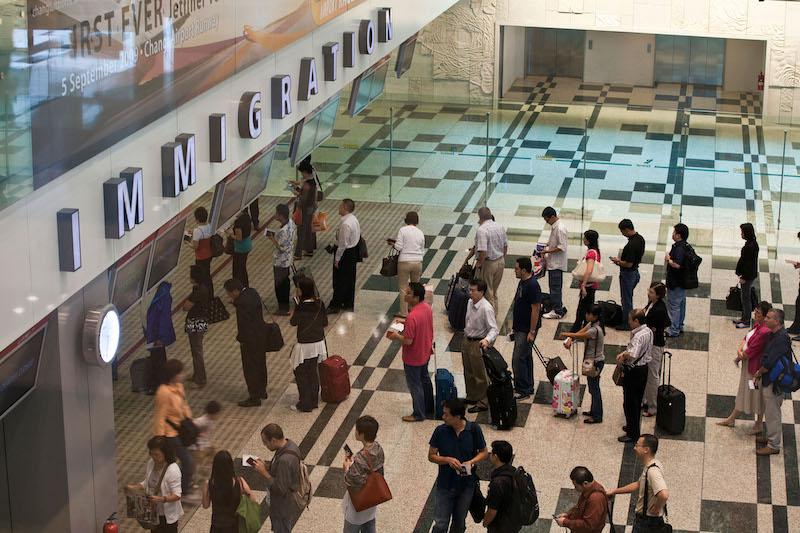Singapore To Allow Passport-Free Biometric Immigration Clearance At Changi Airport

Travelers at Singapore Changi Airport.
Singapore passed a new law Sept. 18 allowing passengers to clear immigration at Changi Airport (SIN) via an automated process using biometrics instead of passports.
Josephine Teo—Singapore’s Minister for Communications and Information and Second Minister for Home Affairs—told the country’s parliament that as soon as the first half of 2024, “a person may undergo immigration clearance using an automated clearance system, if available.”
In a Sept. 18 address to Singapore’s parliament detailing the new passport-free rules, Teo said the “new clearance concept” is necessary to keep pace with rising air traffic.
She said that “there are trends that challenge our ability to exercise effective border control,” adding that “traveler volume has continued to rise across all our checkpoints.”
Passenger traffic levels are “expected to return to pre-pandemic levels by 2024 and continue to increase thereafter,” Teo said. “Changi Airport Terminal 5 is being built ... Our immigration systems must be able to manage this high and growing volume of travelers efficiently and provide a positive clearance experience, while ensuring our security.”
Furthermore, she added that an “aging population and shrinking workforce” mean Singapore’s Immigration and Checkpoints Authority (ICA) “will have to cope without a significant increase in manpower.”
The new law “does not introduce major changes to our immigration policies," Teo told the parliament. "It is about putting in place provisions to better support and facilitate these new initiatives,” she said, adding that the new rules will aim to digitize and automate immigration clearance.
The automated system will also “future-proof our immigration systems and processes against new and evolving challenges,” such as fewer available workers, Teo said.
She added: “ICA will make good use of data analytics and automation for more secure yet efficient immigration clearance of passengers and cargo. For travelers and businesses, there will be time and cost savings from smoother and faster clearance.”
Teo noted a passenger may be “required to appear before an immigration officer for immigration clearance after using the automated clearance system, if so directed.”
The same biometric marker used for immigration clearance will be able to be used as for all points of contact in the airport, Teo said. The SIN “departure journey will be biometric-enabled, end-to-end, from the first half of 2024,” she added.
“Biometrics will be used to create a single token of authentication that will be employed at various automated touchpoints, from bag-drop to immigration and boarding. This will reduce the need for passengers to repeatedly present their travel documents at these touchpoints, allowing for more seamless and convenient processing,” Teo stated.
Singapore will coordinate with other countries as it implements the automated immigration clearance process, according to Teo. The ICA “is engaging relevant cross-border transport operators on the approach for the collection and submission of advance passenger and crew information,” she said. “We will take their views into consideration before any new requirements are implemented.”





